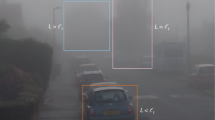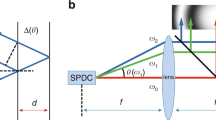Abstract
As has been discovered by Compton1, X-rays falling on a polished surface at small glancing angles are totally—or at least nearly totally—reflected. This phenomenon was explained by Compton as being due to the fact that the index of refraction of X-rays is a little less than unity: n=1, where is small compared 2 with unity.
This is a preview of subscription content, access via your institution
Access options
Subscribe to this journal
Receive 51 print issues and online access
$199.00 per year
only $3.90 per issue
Buy this article
- Purchase on Springer Link
- Instant access to full article PDF
Prices may be subject to local taxes which are calculated during checkout
Similar content being viewed by others
References
A. H. Compton, Phil. Mag., 45, 1121; 1923.
W. Linnik and W. Laschkarew, Zeitschr. f. Phys., 38, 659; 1926.
My attention was first directed to this point by Prof. Kramers.
H. Kallmann and H. Mark, Ann. d. Phys., 82, 585; 1927.
Author information
Authors and Affiliations
Rights and permissions
About this article
Cite this article
PRINS, J. The Total Reflection of X-rays. Nature 120, 188–189 (1927). https://doi.org/10.1038/120188a0
Issue Date:
DOI: https://doi.org/10.1038/120188a0
This article is cited by
-
Anomale Dispersion im R�ntgengebiet
Die Naturwissenschaften (1928)
Comments
By submitting a comment you agree to abide by our Terms and Community Guidelines. If you find something abusive or that does not comply with our terms or guidelines please flag it as inappropriate.



